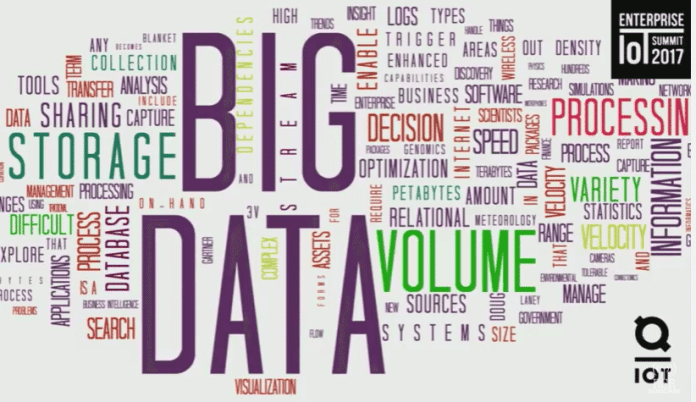No longer are businesses challenged by the concept of connectivity. The internet of things (IoT) has paved the way for the future of communications, with more and more devices making up the network which links families, friends and work colleagues together. However, one aspect of the IoT which is not being taken advantage of is big data.
Very soon, we will be able to see the IoT at play across most industries. The very nature of this rapidly growing concept has meant that everything from domestic appliances, such as fridges and heating systems, to new innovative smart devices, such as Amazon Echo, can now be connected. Consumers have lapped up the possibilities, investing in IoT technology and driving the sales of wearables. The IoT trend shows no sign of slowing down and devices will continue to flood the market; IHS Markit has predicted that the number of smart objects in 2017 will jump 15% year-over-year, reaching 20 billion.
For businesses too, the potential of IoT has revolutionized the way people are working. Machine-to-machine (M2M) has transformed routine tasks like data entry, colleagues are more in-touch than ever, and even the working environment can be controlled remotely through mobile devices.
The result of this spike in connectivity across the globe between devices and M2M has led to a serious increase in big data. And, whilst the term ‘big data’ has been floating around for some time now, never has there been so much of it as there is now. However, its true worth is only just being discovered, and it turns out, big data is in fact a goldmine of intelligence. If harnessed and analyzed accurately, it is the key to bolstering revenue streams.
By monitoring big data, companies are able to take advantage of essentially an encyclopaedia of user behaviour and demands. Collected from a huge number of sensors, geographies, devices and the cloud; in its raw form, the data is unstructured, with streams of information available from an array of sources in real-time.
Therefore, the success of any IoT project – to drive revenue on the business side, and to provide new, better and personalised services on the consumer side – lies in a company’s ability to intelligently harness and capitalise on data. By analyzing this data, companies can tailor offers specifically for customers, improve the quality of services, and develop Alcatraz-worthy security and privacy features.
Due to the collaborative nature of an IoT network, what affects one device, affects them all. In the same way the IoT improves communication, it has also opened the door for potential disruptions which can spread throughout the network quickly, harming user experience.
Irregularities on any network, but specifically the highly-connected IoT network, need to be identified immediately and controlled to minimize impact. Tools which highlight potential threats in a company’s IoT network are therefore crucial to ensure that all associated data and devices are reliable, safe and performing at optimal levels at all times.
Currently, only one third of organizations across Europe have realised the potential of analyzing the data generated by their IoT initiatives. This means that the majority of businesses remain ignorant and are therefore failing to make the most of investments in this area. Unfortunately there is a knock-on effect when it comes to consumers too, as they will essentially miss out on all the value-added services available.
Whilst once upon a time, being connected was the biggest challenge, this is no longer the case. We are at an exciting time in the development of technology, and especially the IoT. We’ve already witnessed early investors in devices and services reap the rewards on offer, and now it is time to educate all enterprise and consumer-focused businesses in taking the reins in this intelligent approach to capitalising on big data.

